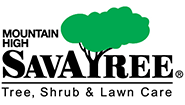More often than not these days, when you look at the beautiful views throughout the Denver Metro area or along the Front Range, you will notice that the deep green of the evergreen forests is marred here and there with ugly patches of brown. These dead patches are evidence of beetle infestations, most probably, the Ips Engraver Beetle, which, like the better-known Mountain Pine Beetle, is a tiny insect that poses a serious risk to the evergreen forests of Western North America.
There is a vicious cycle that begins when trees become stressed. This stress can come from many sources, including root damage from construction and transplanting, but the biggest factor influencing the proliferation of these beetles in recent years is the combination of relatively mild winters and hot, dry summers experienced by much of the western states.
The beetles seek out vulnerable trees with weakened bark in which they can tunnel and lay their eggs. As they attack a tree, the tree produces pheromones that attract even more beetles to the area. The beetles produce breeding galleries under the bark, and the newly emerging larva feed on the vital, conductive portions of the trees. Trees infested with Ips Beetles become even more stressed, turning brown and eventually dying within a year of being attacked.
Mountain High Tree, Lawn, and Landscape Company has spent the past 20 years removing spruce and pine trees throughout the Denver Metro Area that have succumbed to beetle infestations.
While trees that are already infested with beetles must be cut down, protecting trees from these deadly pests can be achieved through pesticide treatments. Foliar sprays have shown over a 95% efficacy rate. There is also a direct trunk injection option, which is more expensive than a spray, but can be a useful tool in sensitive areas where spraying is difficult.
Call Mountain High Tree today and one of our arborists will meet with you to help develop a protection program that works for your landscape.
